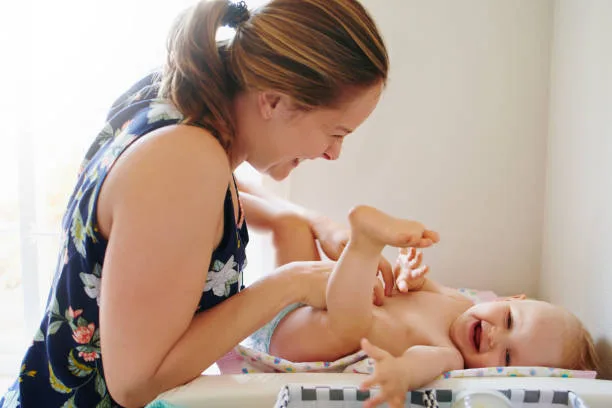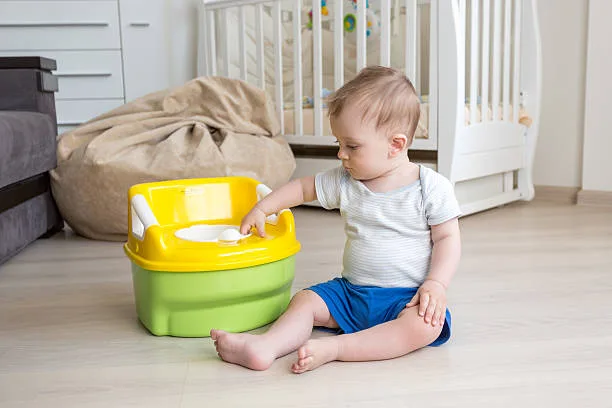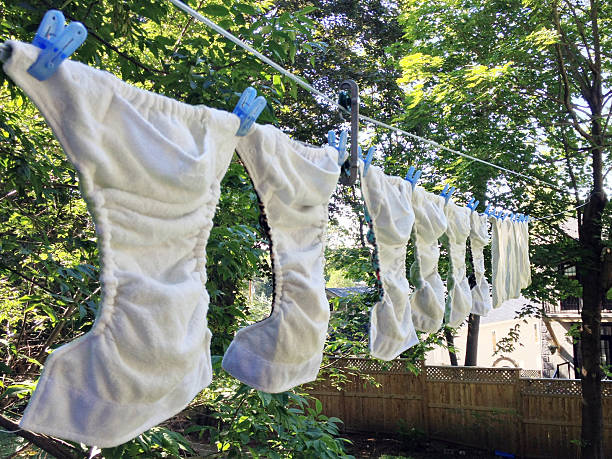Diapers and Infant Health: Navigating the Risks and Safe Practices for Your Baby’s Health”

Introduction
Diapers and Infant Health: Navigating the Risks and Safe Practices for Your Baby’s Health”
In the bustling world of parenting, diapers stand out as a quintessential tool, offering convenience and functionality. However, beneath the surface of this everyday item lies a nuanced landscape of potential health risks that parents should be aware of.
This comprehensive article aims to delve into the multifaceted aspects of diaper usage, exploring how seemingly harmless products may pose dangers to the health and well-being of our little ones.
From skin irritations to chemical exposures, we’ll navigate through the concerns surrounding diapers, all while maintaining a human touch and ensuring Google SEO-friendly content. (Diapers and Infant Health)

A. The Skin Barrier: A Delicate Balance
in topic Diapers and Infant Health we will must talk about skin barrier. The delicate skin of infants and toddlers is highly susceptible to irritation and rash, and diapers play a crucial role in maintaining skin health. However, the prolonged use of diapers, coupled with inadequate changing practices, can disrupt the skin barrier, leading to various skin issues. In this section, we’ll explore the dynamics of skin health in the context of diaper usage and provide practical tips for parents to safeguard their baby’s delicate skin.
may you to read:https://drreactivate.com/knee-pain-prevention-in-old-age/
B. Chemical Composition: Unveiling the Ingredients
Disposable diapers often contain an array of chemicals, including dyes, fragrances, and absorbent gels. While these components are generally deemed safe, some infants may exhibit sensitivity or allergic reactions.
We’ll take a closer look at the chemical composition of diapers, dissecting potential risks and offering insights into selecting diapers with minimal chemical additives.
(Diapers and Infant Health)

C. Breathing Easy or Breathing In? The VOC Controversy
The seemingly innocuous act of diapering involves materials like adhesives and plastics, which, under certain conditions, may release volatile organic compounds (VOCs). Although these emissions typically fall within established safety standards, concerned parents may still ponder the impact on their baby’s respiratory health.
In this section, we’ll unravel the VOC controversy, examining the existing evidence and providing recommendations for minimizing potential risks.

D. Genital Health: Balancing Act in the Diaper Zone
A warm and moist environment created by diapers can become a breeding ground for bacteria and yeast, potentially leading to urinary tract infections or diaper dermatitis.
Understanding the delicate balance required for genital health is crucial for parents seeking to navigate the diapering journey safely.
This section will explore the intricacies of maintaining optimal genital health in babies, including tips for diaper selection and hygiene practices. And it’s important to change diapers quickly
E. The Art of Diapering: Best Practices for Happy Bottoms
To mitigate potential health risks associated with diaper use, adopting best practices is paramount. Frequent diaper changes, choosing the right diaper size, and incorporating diaper-free time are essential components of the art of diapering.
We’ll provide practical tips and actionable advice for parents to create a diapering routine that prioritizes their baby’s health and comfort.
(Diapers and Infant Health)

F. Cloth Diapers: A Sustainable Alternative?
As environmental consciousness grows, some parents turn to cloth diapers as a potentially safer and more eco-friendly option. We’ll explore the pros and cons of cloth diapering, shedding light on how this alternative might address certain health concerns associated with disposable diapers.
But here I am going to tell you some ways by which you can make your child safely use diparis.
Safeguarding Your Baby’s Well-being: Navigating Diapering on the Safe Side.
Diapers and Infant Health: Navigating the Risks and Safe Practices for Your Baby’s Health”. While the potential health risks associated with diapers are crucial to understanding, it’s equally important to emphasize that with informed practices, parents can use diapers on the safe side.
Here, we delve into actionable strategies and guidelines for safeguarding your baby’s well-being during the diapering process.
A. Frequent Diaper Changes: The Foundation of Healthy Diapering
The cornerstone of using diapers safely lies in maintaining a vigilant approach to diaper changes. Prolonged exposure to moisture can contribute to skin irritation and diaper rash.
Therefore, ensuring timely diaper changes is essential. Establishing a routine that includes regular checks and changes, especially after feedings, can significantly reduce the risk of skin issues.
may you like to read:https://drreactivate.com/a-guide-for-new-moms-on-postpartum-recovery/
B. Choosing Diapers Wisely: Opting for Skin-Friendly Options
Not all diapers are created equal, and selecting the right ones can make a significant difference in your baby’s comfort and well-being. Look for diapers with minimal chemical additives, fragrances, and dyes, especially if your baby has sensitive skin.
Additionally, consider diapers labeled as hypoallergenic or designed for sensitive skin. Taking the time to research and choose the right diaper brand can go a long way in ensuring your baby’s safety.
C. Optimal Diaper Sizing: Finding the Perfect Fit
Selecting the correct diaper size is often overlooked but plays a pivotal role in preventing leaks and discomfort. Diapers that are too tight can lead to chafing and restricted airflow, increasing the risk of skin issues.
Conversely, diapers that are too loose may not provide adequate protection against leaks. Regularly assess your baby’s growth and adjust diaper sizes accordingly to maintain an optimal fit.

D. Embrace Diaper-Free Time: Letting the Skin Breathe
Allowing your baby some diaper-free time is a simple yet effective way to promote skin health. The exposure to air helps in keeping the diaper area dry and reduces the likelihood of diaper rash.
Lay a soft, absorbent cloth or mat in a safe, designated space and let your baby enjoy some freedom from diapers during periods of wakefulness.
Always supervise your baby during diaper-free time to ensure their safety. And by doing this, it will be easier for the child to train the potty in the toilet.

E. Cloth Diapers: A Consideration for Some Parents
For those seeking an alternative to disposable diapers, cloth diapers can be a viable option. Cloth diapers, when washed and maintained properly, may reduce exposure to certain chemicals found in disposables. They also contribute to environmental sustainability.
However, it’s crucial to note that cloth diapers come with their own set of considerations, including increased laundry demands and the initial investment in reusable diaper supplies. And it is also worth remembering that if not washed properly, there will be a risk of germs
my dear friends, Incorporating these safe diapering practices into your routine can help mitigate potential health risks and contribute to a positive diapering experience for both you and your baby.
Remember, each baby is unique, so staying attuned to your baby’s cues and needs is key to ensuring their comfort and well-being during the diapering journey.
Would you like to read:https://drreactivate.com/healthy-eating-for-teens
and: https://drreactivate.com/understanding-schizophrenia/
Conclusion
In the grand tapestry of parenting, diapers occupy a central role, simplifying the complexities of caring for infants and toddlers. However, as we’ve uncovered in this extensive exploration, the seemingly innocuous diaper may harbor potential health hazards.
By understanding these risks and implementing informed practices, parents can navigate the diapering journey with confidence, ensuring the health and well-being of their little ones.
In closing, we’ll recap key takeaways and empower parents with the knowledge needed to make informed decisions in the best interest of their child’s health.
FAQs
Are all diapers safe for my baby’s skin?
Not all diapers are created equal. While many are designed with safety in mind, some may contain chemicals, fragrances, or dyes that could potentially irritate a baby’s sensitive skin. Opting for diapers labeled as hypoallergenic or designed for sensitive skin can be a safer choice.
How frequently should I change my baby’s diaper to ensure their skin remains healthy?
Regular diaper changes are crucial for maintaining healthy skin. Aim to change your baby’s diaper every 2-3 hours, or more frequently if it is soiled. Prompt changing helps prevent moisture-related skin issues and diaper rash.
Can using diapers lead to diaper rash?
Prolonged exposure to moisture, friction, or certain chemicals in diapers can contribute to diaper rash. Ensuring frequent diaper changes, using skin-friendly diapers, and incorporating diaper-free time can significantly reduce the risk of diaper rash.
What precautions can I take to minimize the risk of diaper rash?
To minimize the risk of diaper rash, consider the following:
Change diapers frequently.
Choose diapers without unnecessary additives.
Ensure a proper diaper fit.
Incorporate diaper-free time to let the skin breathe.
Are cloth diapers a safer alternative to disposable diapers?
Cloth diapers can be considered a safe alternative, especially for parents concerned about potential chemicals in disposables. However, proper washing and maintenance are crucial to prevent bacterial growth. Cloth diapers also require more effort in terms of cleaning and may have an initial higher cost.
Can diaper sizing impact my baby’s comfort and health?
Yes, selecting the correct diaper size is essential. Diapers that are too tight may cause chafing and discomfort, while those that are too loose may lead to leaks. Regularly assess your baby’s growth and adjust diaper sizes accordingly for the best fit.
Are there specific chemicals in diapers that I should be concerned about?
Some disposable diapers contain chemicals like dyes, fragrances, and absorbent gels. While these are generally considered safe, some babies may be sensitive to them. Choosing diapers with minimal additives can reduce the risk of potential skin reactions.
How can I incorporate diaper-free time safely?
To safely include diaper-free time, choose a safe and clean area, lay down a soft mat or cloth, and supervise your baby closely. This practice allows the skin to breathe, reducing the risk of diaper rash.
Are there any risks associated with using diapers overnight?
While using diapers overnight is generally safe, it’s crucial to choose highly absorbent diapers to prevent leaks. Ensure the diaper is not too tight, and consider changing it as soon as your baby wakes up to maintain optimal skin health.
What signs should I look for to identify potential issues related to diaper use?
Watch for signs of skin irritation, redness, or discomfort in the diaper area. If you notice persistent issues, consult with your pediatrician for guidance on adjusting your diapering routine or exploring alternative options.
Can using diapers impact my baby’s genital health?
Prolonged use of diapers, especially those that are too tight, can create a warm and moist environment, potentially leading to the growth of bacteria and yeast. Choosing diapers with proper sizing and allowing for diaper-free time can help maintain optimal genital health.
Is it safe to use diaper creams or ointments regularly?
Using diaper creams or ointments with each diaper change may not be necessary for every baby. However, if your baby is prone to diaper rash, applying a barrier cream containing zinc oxide can provide added protection. Always consult with your pediatrician before introducing new products.
What role does diaper material play in ensuring safety?
The materials used in diapers, such as adhesives and plastics, should be skin-friendly and breathable. Diapers with good ventilation can help prevent overheating and reduce the risk of skin issues. Opt for diapers made from hypoallergenic materials if your baby has sensitive skin.
How can I ensure diaper hygiene to prevent infections?
Practicing proper diaper hygiene is essential. Clean the diaper area thoroughly during changes, and make sure your baby is completely dry before putting on a new diaper. Dispose of diapers in a hygienic manner, and wash your hands after each diaper change to prevent the spread of germs.
Are there specific considerations for using diapers in hot or humid climates?
In warmer climates, maintaining proper ventilation is crucial. Choose breathable diapers and dress your baby in light, breathable clothing. Ensure frequent diaper changes to prevent excessive sweating, and consider incorporating more diaper-free time to allow the skin to cool and breathe.
Can using cloth diapers contribute to diaper rash or infections?
While cloth diapers are a popular choice for many parents, improper washing or prolonged use of wet cloth diapers may increase the risk of diaper rash or infections. Following proper washing instructions, changing diapers promptly, and ensuring good ventilation can help mitigate these risks.
How can I introduce solid foods without causing diaper-related issues?
The introduction of solid foods can sometimes lead to changes in bowel movements and increased acidity, potentially causing diaper rash. Be vigilant about changing diapers promptly after bowel movements, use gentle wipes, and consider applying a protective barrier cream to prevent irritation.
Are there any long-term health implications associated with diaper use?
There is limited evidence to suggest long-term health implications from using diapers. However, maintaining good diaper hygiene, choosing diapers wisely, and being attentive to your baby’s needs can contribute to overall health and comfort.
How can I strike a balance between convenience and my baby’s health when using diapers?
The key is to stay informed and strike a balance. Prioritize your baby’s health by choosing diapers carefully, practicing good hygiene, and being attentive to signs of discomfort. Incorporate diaper-free time, select the right diaper size, and consult with healthcare professionals if you have concerns. Balancing convenience with your baby’s well-being is achievable with thoughtful consideration and informed choices.


2 thoughts on “Diapers and Infant Health: Navigating the Risks and Safe Practices for Your Baby’s Health””